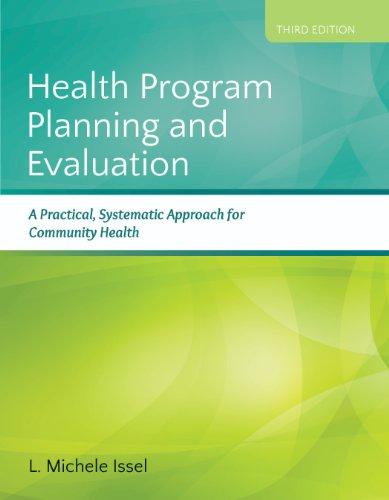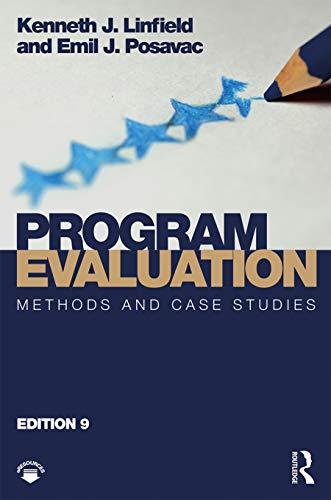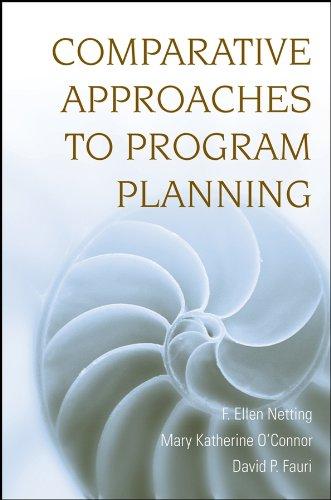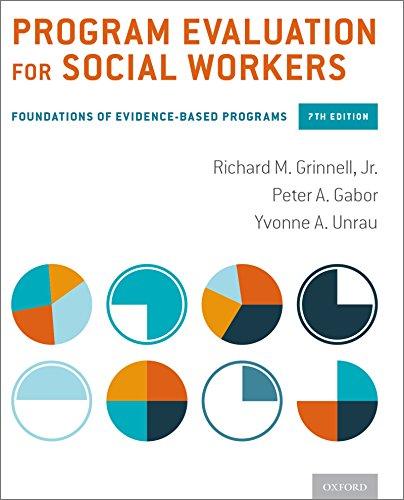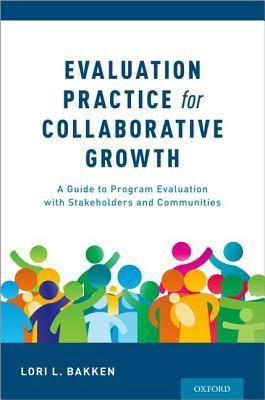Health Program Planning and Evaluation
A Practical, Systematic Approach for Community Health
L. Michele Issel, PhD, RN Clinical Professor School of Public Health
University of Illinois at Chicago
4
Prioritization 106
Decision 106
Implementation and Continuation 107
Across the Pyramid 107
Discussion Questions 108
Internet Resources 109
References 110
Community Health Assessment for Program Planning 113
Defining Community 113
Community as Context and Target 115
Defining Terms: Based, Focused, and Driven 116
Types of Needs 118
Perspectives on Assessment 120
Epidemiological Perspective 120
Public Health Perspective 123
Social Perspective 123
Asset Perspective 124
Rapid Perspective 125
Types of Assessments 126
Organizational Assessment 126
Marketing Assessment 127
Needs Assessment 127
Community Health Assessment 128
Workforce Assessment 129
Steps in Conducting the Assessment 129
Involve Community Members 130
Define the Population 131
Define the Problem to Be Assessed 132
Anticipate Data-Related and Methodological Issues 133
Across the Pyramid 135
Discussion Questions 136
Internet Resources 137
References 138
Characterizing and Defining the Health Problem 141
Collecting Data from Multiple Sources 141
Public Data 141
Published Literature 142
Primary Data 142
Observational Data 143
Archival Data 143
Proprietary Data 143
Other Data Sources 144
Collecting Descriptive Data 144
Magnitude of the Problem 144
Dynamics Leading to the Problem 145
Population Characteristics 146
Attitudes and Behaviors 146
Years of Life and Quality of Life 148
Statistics for Describing Health Problems 151
Descriptive Statistics 151
Geographic Information Systems: Mapping 154
Small Numbers and Small Areas 154
Stating the Health Problem 155
Diagramming the Health Problem 156
Writing a Causal Theory of the Health Problem 162
Prioritizing Health Problems 164
Nominal Group Technique 165
Basic Priority Rating System 166
Propriety, Economics, Acceptability, Resources, and Legality (PEARL) Component 169
Prioritizing Based on Importance and Changeability 170
Across the Pyramid 171
Discussion Questions and Activities 174
Internet Resources 174
References 175
SECTION III Health Program Development 179
6
Program Theory and Interventions Revealed 181
Program Theory 182
Process Theory 183
Effect Theory 184
Interventions 185
Finding and Identifying Interventions 186
Types of Interventions 187
Specifying Intervention Administration and Dosage 188
Interventions and Program Components 191
Characteristics of Good Interventions 192
Path to Program Outcomes and Impacts 197
Elements of the Effect Theory 198
Generating the Effect Theory 201
Involve Key Stakeholders 201
Draw Upon the Scientific Literature 203
Diagram the Causal Chain of Events 205
Check Against Assumptions 205
Functions of Program Theory 206
Provide Guidance 206
Enable Explanations 207
Form a Basis for Communication 208
Make a Scientific Contribution 209
Across the Pyramid 209
Discussion Questions and Activities 210
Internet Resources 211
References 212
7 Program Objectives and Setting Targets 215
Program Goals and Objectives 215
Goals 216
Foci of Objectives 216
Objectives and Indicators 221
Good Goals and Objectives 223
Using Data to Set Target Values 226
Decisional Framework for Setting Target Values 227
Stratification and Object Target Values 231
Use of Logic Statements to Develop Targets 232
Options for Calculating Target Values 233
Caveats to the Goal-Oriented Approach 245
Across the Pyramid 246
Discussion Questions and Activities 247
Internet Resources 247
References 248
SECTION IV Implementing and Monitoring the Health Program 249
8
Program Implementation 251
Organizational Plan Inputs 253
Human Resources 253
Physical Resources 257
Transportation 258
Informational Resources 258
Time 258
Managerial Resources 259
Fiscal Resources 260
Organizational Plan Outputs 261
Timeline 261
Operations Manual 261
Organizational Chart 263
Information System 263
Inputs to Service Utilization Plan 263
Social Marketing 263
Eligibility Screening 264
Queuing 269
Intervention Delivery 270
9
Services Utilization Plan Outputs 272
Summary: Elements of Organizational and Services Utilization Plans 273
Alternative Plan Formats 274
Logic Models 275
Business Plans 276
Across the Pyramid 278
Discussion Questions and Activities 279
Internet Resources 280
References 281
Monitoring Implementation Through Budgets and Information Systems 283
Budgets and Budgeting 283
Budgeting Terminology 284
Budgeting as Part of Planning 286
Monetize and Compute Program Costs 286
Budget for Start-Up and Evaluation Costs 287
Break-Even Analysis 288
Budget Justification 292
Budget as a Monitoring Tool 292
Budget Variance 293
Types of Cost Analyses 293
Information Systems 298
Health Informatics Terminology 298
Information Systems Considerations 299
Across the Pyramid 301
Discussion Questions and Activities 302
Internet Resources 303
References 303
10 Implementation Evaluation: Measuring Inputs and Outputs 305
Assessing the Implementation 305
Implementation
Documentation 307
Implementation Assessment 307
Implementation Evaluation 308
11
Efficacy, Effectiveness, and Efficiency 310
Data Collection Methods 311
Quantifying Inputs to the Organizational Plan 314
Human Resources 316
Physical Resources 318
Quantifying Outputs of the Organizational Plan 319
Information Systems 319
Monetary Resources 320
Quantifying Inputs to the Services Utilization Plan 320
Participants and Recipients 320
Intervention Delivery and Fidelity 322
Quantifying Outputs of the Services Utilization Plan 325
Coverage as Program Reach 325
Participant-Related Issues 329
Program Logistics 333
Across the Pyramid 334
Discussion Questions and Activities 336
Internet Resources 336
References 337
Program Quality and Fidelity: Managerial and Contextual Considerations 339
The Accountability Context 340
Program Accountability 340
Professional Accountability 341
Performance and Quality: Navigating the Interface 342
Quality Improvement Approaches 343
Quality Improvement Tools 344
Relevance to Health Programs 347
Performance Measurement 347
Informatics and Information Technology 351
Creating Change for Quality and Fidelity 352
Interpreting Implementation Data 352
Maintaining Program Process Quality and Fidelity 354
Managing Group Processes for Quality and Fidelity 356
When and What Not to Change 356
Formative Evaluations 357
Across the Pyramid 357
Discussion Questions 358
Internet Resources 359
References 360
SECTION V Outcome and Impact Evaluation of Health Programs 363
12
Planning the Intervention Effect Evaluations 365
Developing the Evaluation Questions 366
Characteristics of the Right Question 367
Outcome Documentation, Outcome Assessment, and Outcome Evaluation 369
Evaluation and Research 370
Rigor in Evaluation 372
Variables from the Program Effect Theory 373
Outcome and Impact Dependent Variables 373
Causal Factors as Independent Variables 376
Antecedent, Moderating, and Mediating Factors as Variables 376
Measurement Considerations 378
Units of Observation 378
Types of Variables (Levels of Measurement) 378
Timing 381
Sensitivity of Measures 382
Threats to Data Quality 383
Missing Data 384
Reliability Concerns 384
Validity of Measures 385
Contextual Considerations in Planning the Evaluation 386
Evaluation Standards 386
Ethics 387
Stakeholders 388
Across the Pyramid 389
13
Discussion Questions and Activities 391
Internet Resources 391
References 391
Choosing Designs for Effect Evaluations 393
Evaluation Design Caveats 394
Considerations in Choosing a Design 395
Integrated Use of Designs: An Example 401
Choosing the Evaluation Design 402
Identifying Design Options 402
Overview of the Decision Tree 403
Designs for Outcome Documentation 406
Designs for Outcome Assessment 410
Designs for Outcome Evaluation 418
Practical Issues with Experimental Designs 419
Designs and Failures 422
Across the Pyramid 424
Discussion Questions 425
Internet Resources 425
References 426
14
Sampling Designs and Data Sources for Effect Evaluations 429
Sampling Realities 429
Sample Construction 431
Hard-to-Reach Populations 433
Sample Size 434
Calculating Response Rates 435
Sampling for Effect Evaluations 438
Sampling for Outcome Assessment 438
Sampling for Outcome Evaluation 440
Data Collection Methods 441
Surveys and Questionnaires 443
Secondary Data 446
Physical Data 448
Across the Pyramid 448
15
Discussion Questions and Activities 449
Internet Resources 449
References 450
Quantitative Data Analysis and Interpretation 453
Data Entry and Management 454
Outliers 456
Linked Data 456
Sample Description 458
Thinking About Change 458
Change as a Difference Score 458
Issues with Quantifying Change from the Program 460
Clinical and Statistical Significance 464
Across Levels of Analysis 465
Statistical Answers to the Questions 467
Description 470
Comparison 471
Association 472
Prediction 475
Interpretation 477
Four Fallacies of Interpretation 478
Ecological Fallacy 480
Across the Pyramid 480
Discussion Questions and Activities 481
Internet Resources 482
References 483
16
Qualitative Methods for Planning and Evaluation 485
Qualitative Methods Throughout the Planning and Evaluation Cycle 485
Qualitative Methods 486
Individual In-Depth Interview 487
Written Open-Ended Questions 489
Focus Group 490
Observation 491
Case Study 493
Innovative Methods 495
Scientific Rigor 497
Sampling for Qualitative Methods 499
Analysis of Qualitative Data 502
Overview of Analytic Process 502
Software 505
Issues to Consider 506
Presentation of Findings 507
Across the Pyramid 507
Discussion Questions and Activities 509
Internet Resources 509
References 510
SECTION VI Additional Considerations for Evaluators 513
17 Program Evaluators’ Responsibilities 515
Ethical Responsibilities 515
Institutional Review Board Approval and Informed Consent 516
Ethics and Evaluation 517
HIPAA and Evaluations 520
Responsible Spin of Data and Information 521
Persuasion and Information 521
Information and Sense Making 523
Reporting Responsibly 525
Report Writing 525
Making Recommendations 527
Misuse of Evaluations 531
Broader Dissemination 532
Expansions and Replications 533
Responsible Contracts 533
Organization–Evaluator Relationship 533
Health Policy 535
Responsible for Evaluation Quality 536
Responsible for Current Practice 537
RE-AIM and Other Models 537
Meta-Analysis 538
Across the Pyramid 539
Discussion Questions and Activities 541
Internet Resources 541
References 542
Index 545
LIST OF FIGURES
Figure 1-1 The Planning and Evaluation Cycle 14
Figure 1-2 The Public Health Pyramid 25
Figure 1-3 The Pyramid as an Ecological Model 28
Figure 2-1 Effects of Diversity Throughout the Planning and Evaluation Cycle 38
Figure 3-1 The Planning and Evaluation Cycle 86
Figure 4-1 Connections Among Program, Agency, and Community 117
Figure 4-2 Venn Diagram of Community Based, Community Focused, and Community Driven 118
Figure 5-1 Generic Model of a Theory of Causes 157
Figure 5-2 Diagram of Theory of Causes/Determinants of Receiving Immunizations, as Contributing to Audlt Immunization Rates, Using the Layetteville Example 161
Figure 5-3 Diagram of Theory of Causes/Determinants for Deaths from Gunshot Wounds, as Contributing to Adolescent Death Rates, Using the Layetteville Example 161
Figure 5-4 Diagram of Theory of Causes/Determinants for Neural Tube Defects, as Contributing to Rates of Congenital Anomalies, Using the Bowe County Example 162
Figure 5-5 Theory of Causes/Determinants with Elements of the BPRS Score: Size, Seriousness, and Interventions 169
Figure 6-1 Model of Program Theory 183
Figure 6-2 The Effect Theory Showing the Causal Theory Using Community Diagnosis Elements 185
Figure 6-3 Effect Theory Example: Effect Theory for Reducing the Rate of Congenital Anomalies 201
Figure 6-4 Two Roots of Program Failure 208
Figure 7-1 Using Elements of Program Theory as the Basis for Writing Program Objectives 218
Figure 7-2 Diagram Showing Relationship of Effect Theory Elements to Process and Outcome Objectives 220
Figure 7-3 Calculations of Options 1 Through 4 Using a Spreadsheet 234
Figure 7-4 Calculations of Options 5 Through 8 Using a Spreadsheet 235
Figure 7-5 Calculations of Options 9 and 10 Using a Spreadsheet 236
Figure 8-1 Amount of Effort Across the Life of a Health Program 251
Figure 8-2 Diagram of the Process Theory Elements Showing the Components of the Organizational Plan and Services Utilization Plan 252
Figure 8-3 Process Theory for Neural Tube Defects and Congenital Anomalies Health Problem 273
Figure 8-4 Effect and Process Theory for Neural Tube Defect Prevention Program 274
Figure 9-1 Relevance of Process Theory to Economic Evaluations 287
Figure 9-2 Information System Processes Throughout the Program Planning Cycle 300
Figure 10-1 Elements of the Process Theory Included in a Process Evaluation 306
Figure 10-2 Roots of Program Failure 309
Figure 10-3 Examples of Organizational Plan Inputs and Outputs That Can Be Measured 314
Figure 10-4 Examples of Services Utilization Inputs and Outputs That Can Be Measured 321
Figure 11-1 List of Quality Improvement Tools with Graphic Examples 345
Figure 12-1 Planning and Evaluation Cycle, with Effect Evaluation Highlights 366
Figure 12-2 Diagram of Net Effects to Which Measures Need to Be Sensitive 372
Figure 12-3 Using the Effect Theory to Identify Effect Evaluation Variables 374
Figure 12-4 Effect Theory of Reducing Congenital Anomalies Showing Variables 377
Figure 13-1 Relationship Between the Ability to Show Causality and the Costs and Complexity of the Design 396
Figure 13-2 Decision Tree for Choosing an Evaluation Design, Based on the Design’s Typical Use 404
Figure 13-3 Three Sources of Program Failure 422
Figure 14-1 Probability and Nonprobability Samples and Their Usage 435
Figure 15-1 Contributing Factors to the Total Amount of Change 465
Figure 15-2 Summary of the Three Decisions for Choosing an Analytic Approach 468
Figure 15-3 Five Ways That the Rate of Change Can Be Altered 479
Figure 17-1 Making Recommendations Related to the Organizational and Services Utilization Plans 528
Figure 17-2 Making Recommendations Related to the Program Theory 529
Figure 17-3 The Planning and Evaluation Cycle with Potential Points for Recommendations 530
LIST OF TABLES
Table 1-1 Comparison of Outcome-Focused and Utilization-Focused Evaluations 8
Table 1-2 Evaluation Standards Established by the Joint Commission on Standards for Educational Evaluation 10
Table 1-3 Assessment, Implementation, and Evaluation Across the Program Life Cycle 19
Table 1-4 A Summary of the Healthy People 2020 Priority Areas 31
Table 2-1 Examples of Cultural Tailoring Throughout the Program Planning and Evaluation Cycle 39
Table 2-2 Indicators Used to Measure Race in Different Surveys 45
Table 2-3 Professional Diversity Among Health Professions 53
Table 2-4 Cultural Continuum with Examples of the Distinguishing Features of Each Stage 58
Table 3-1 Comparison of Models Developed for Public Health Planning 85
Table 3-2 Ethical Frameworks and Principles for Planning Health Programs 93
Table 3-3 Summary of the Six Approaches to Planning, with Public Health Examples 95
Table 4-1 Three Elements of Community, with Their Characteristics 114
Table 4-2 A Comparison of the Five Perspectives on Community Health and Needs Assessment 121
Table 4-3 Numerators and Denominators for Selected Epidemiological Rates Commonly Used in Community Health Assessments 122
Table 5-1 Haddon’s Typology for Analyzing an Event, Modified for Use in Developing Health Promotion and Prevention Programs 147
Table 5-2 Quality-of-Life Acronyms and Definitions 148
Table 5-3 Global Leading Causes of Disability-Adjusted Life-Years (DALYs) and Years of Life Lost (YLL) 150
Table 5-4 Existing Factors, Moderating Factors, Key Causal Factors, Mediating Factors, and Health Outcome and Impact for Five Health Problems in Layetteville and Bowe County 159
Table 5-5 Relationship of Problem Definition to Program Design and Evaluation 165
Table 5-6 Criteria for Rating Problems According to the Basic Priority Rating System 167
Table 5-7 Program Prioritization Based on the Importance and Changeability of the Health Problem 170
Table 5-8 Examples of Sources of Data for Prioritizing Health Problems at Each Level of the Public Health Pyramid 172
Table 5-9 Examples of Required Existing, Causal Factors, and Moderating Factors Across the Pyramid 173
Table 6-1 Examples of Interventions by Type and Level of the Public Health Pyramid 189
Table 6-2 Comparison of Effect Theory, Espoused Theory, and Theory-in-Use 202
Table 6-3 Examples of Types of Theories Relevant to Developing Theory of Causative/Determinant Factors or Theory of Intervention Mechanisms by Four Health Domains 204
Table 6-4 Examples of Types of Theories Relevant to Developing the Organizational Plan and Services Utilization Plan Components of the Process Theory 204
Table 7-1 Aspects of Process Objectives as Related to Components of the Process Theory, Showing the TAAPS Elements 219
Table 7-2 Domains of Individual or Family Health Outcomes with Examples of Corresponding Indicators and Standardized Measures 222
Table 7-3 Bowe County Health Problems with Indicators, Health Outcomes, and Health Goals 224
Table 7-4 Effect Objectives Related to the Theory of Causal/Determinant Factors, Theory of the Intervention Mechanisms, and Theory of Outcome to Impact, Using Congenital Anomalies as an Example 225
Table 7-5 Effect Objectives Related to the Theory of Causal/Determinant Factors, Theory of the Intervention Mechanisms, and Theory of Outcome to Impact, Using Adolescent Pregnancy as an Example 226
Table 7-6 Matrix of Decision Options Based on Current Indicator Value, Population Trend of the Health Indicator, and Value of Long-Term Objective or Standard 229
Table 7-7 Framework for Target Setting: Interaction of Data Source Availability and Consistency of Information 230
Table 7-8 Summary of When to Use Each Option 237
Table 7-9 Range of Target Values Derived from Options 1 Through 10, Based on the Data from Figures 7-3 Through 7-5 244
Table 8-1 List of Health Professionals with a Summary of Typical Legal and Regulatory Considerations 254
Table 8-2 Relationship of Test Sensitivity and Specificity to Overinclusion and Underinclusion 266
Table 8-3 Examples of Partial and Full-Coverage Programs by Level of the Public Health Pyramid 268
Table 8-4 Template for Tracking Services Utilization Outputs Using Example Interventions and Hypothetical Activities 272
Table 8-5 Hypothetical Logic Model of Program for Reducing Congenital Anomalies 275
Table 8-6 Generic Elements of a Business Plan, with Their Purpose and Corresponding Element of the Process Theory and Logic Model 277
Table 9-1 Formulas Applied for Options A and B 290
Table 10-1 Methods of Collecting Process Evaluation Data 312
Table 10-2 Example of Measures of Inputs and Outputs of the Organizational Plan 315
Table 10-3 Examples of Measures of Inputs and Outputs of the Services Utilization Plan 322
Table 10-4 Matrix of Undercoverage, Ideal Coverage, and Overcoverage 326
Table 10-5 Examples of Process Evaluation Measures Across the Public Health Pyramid 335
Table 11-1 Types of Program Accountability, with Definitions and Examples of Process Evaluation Indicators 341
Table 11-2 Comparison of Improvement Methodologies and Program Process Evaluation 348
Table 11-3 Definitions of Terms Used in Performance Measurement 349
Table 11-4 Partial List of Existing Performance Measurement Systems Used by Healthcare Organizations, with Their Websites 350
Table 12-1 Three Levels of Intervention Effect Evaluations 370
Table 12-2 Differences Between Evaluation and Research 371
Table 12-3 Advantages and Disadvantages of Using Each Type of Variable 379
Table 12-4 Examples of Nominal, Ordinal, and Continuous Variables for Different Health Domains 380
Table 12-5 Example Timeline Showing the Sequence of Intervention and Evaluation Activities 383
Table 12-6 Summary of Evaluation Elements 389
Table 13-1 Contribution of Disciplines to Health Program Evaluation 395
Table 13-2 Summary of Main Designs and Their Use for Individual- or Population-Level Effect Evaluations 405
Table 13-3 Approaches to Minimizing Each of the Three Types of Program Failure 423
Table 14-1 Probability and Nonprobability Samples and Their Usage 432
Table 14-2 Comparison of Main Types of Samples with Regard to Implementation Ease, Degree of Representativeness, and Complexity of Sampling Frame 439
Table 14-3 Example of Data Sources for Each Health and Wellbeing Domain 442
Table 14-4 Interaction of Response Bias and Variable Error 446
Table 15-1 Calculation of Effectiveness and Adequacy Indices: An Example 462
Table 15-2 Intervention Efficiency as a Relation of Effect Size and Causal Size 464
Table 15-3 Factors That Affect the Choice of a Statistical Test: Questions to Be Answered 468
Table 15-4 Analysis Procedures by Level of Intervention and Level of Analysis (Assuming Data Collected at Same Level as Analysis) 469
Table 15-5 Commonly Used Parametric and Nonparametric Statistical Tests for Comparison, Association, and Prediction 471
Table 15-6 Main Types of Comparison Analyses Used, by Level of Analysis, Assuming the Variables Are at the Same Level of Measurement 472
Table 15-7 Main Types of Association Analyses Used, by Level of Analysis, Assuming Variables Are the Same Level of Measurement 473
Table 15-8 Example of Statistical Tests for Strength of Association by Level of Measurement, Using Layetteville Adolescent Anti-Violence Program 474
Table 15-9 Examples of Statistical Tests by Evaluation Design and Level of Measurement, with Examples of Variables 475
Table 15-10 Main Types of Prediction Analyses Used, by Level of Analysis, Assuming Variables Are at the Same Level of Measurement 476
Table 16-1 Comparison of Qualitative Perspectives with Regard to the Basic Question Addressed and the Relevance to Health Program Planning and Evaluation 487
Table 16-2 Comparison of Major Qualitative Perspectives with Regard to the Method Used 487
Table 16-3 Summary of Key Benefits and Challenges to Using Qualitative Methods in Planning and Evaluation 488
Table 16-4 Sampling Considerations for Each of the Qualitative Methods Discussed 499
Table 16-5 Summary of Types of Sampling Strategies Used with Qualitative Designs 501
Table 16-6 Example of Interview Text with Final Coding 504
Table 16-7 Suggested Qualitative Methods by Pyramid Level and Planning Cycle 508
Table 17-1 Comparison of Types of IRB Reviews 517
Table 17-2 Eight Elements of Informed Consent, as Required in 45 CFR 46 518
Table 17-3 Effect of Rigor and Importance of Claims on Decision Making 523
Table 17-4 List of Ways to Make Graphs More Interpretable 527
LIST OF EXHIBITS
Exhibit 2-1 Checklist to Facilitate Development of Cultural and Linguistic Competence Within Healthcare Organizations 63
Exhibit 2-2 Checklist to Facilitate Cultural Competence in Community Engagement 67
Exhibit 8-1 Example of an Abbreviated Timeline for a Short-Term Health Program 262
Exhibit 8-2 Paragraph Rewritten at an Eighth-Grade Reading Level 271
Exhibit 9-1 Example of a Scenario Needing a Break-Even Analysis 289
Exhibit 9-2 Example of a Budget Used for a Break-Even Analysis for Bright Light on an Excel Spreadsheet 289
Exhibit 9-3 Break-Even Table Shows Number of Paying Students Needed to Break Even 291
Exhibit 9-4 Example of a Budget Showing Year-to-Date Variance 294
Exhibit 9-5 Types of Cost Analyses 296
Exhibit 10-1 Formulas for Measures of Coverage 326
Exhibit 10-2 Example of Coverage and Dosage Measures Narrative Background 327
Exhibit 10-3 Examples of Coverage Measures Using an Excel Spreadsheet 328
Exhibit 10-4 Examples of Calculating Dosage for the Congenital Anomalies Prevention Program Using Excel 331
Preface to the Third Edition
The third edition of Health Program Planning and Evaluation has stayed true to the purpose and intent of the first and second editions. This advanced-level text is written to address the needs of professionals from diverse health disciplines who find themselves responsible for developing, implementing, or evaluating health programs. The aim of the text is to assist health professionals to become not only competent health program planners and evaluators, but also savvy consumers of evaluation reports and prudent users of evaluation consultants. To that end, the text includes a variety of practical tools and concepts necessary to develop and evaluate health programs, presenting them in language understandable to both the practicing and novice health program planner and evaluator.
Health programs are conceptualized as encompassing a broad range of programmatic interventions that span the social-ecological range from individual-level to population-level programs. Examples of programs cited throughout the text are specific, yet broadly related to improving health, and reflect the breadth of public health programs. Maintaining a public health focus provides an opportunity to demonstrate how health programs can target different levels of a population, different determinants of the health problem, and different strategies and interventions to address the health problems. In addition, examples of health programs and references are selected to pique the interests of the diverse students and practicing professionals who constitute multidisciplinary program teams. Thus, the content and examples presented here are relevant to health administrators, medical social workers, nurses, nutritionists, pharmacists, public health professionals, physical and occupational therapists, and physicians.
This textbook grew from my own teaching experiences with both nurses and public health students and their need for direct application of the program planning and evaluation course content to their work and lives. Available textbooks have a social services orientation, but little direct relevance to the health programs with which nurses and public health students are familiar. The environment of today requires that programs be provided through community-based healthcare settings to address broad public health issues and expand the individual to population focus. The distinction between individual patient health and behavior and population health requires special attention so that students from clinical backgrounds can learn to think and plan in terms of aggregates and populations.
In most graduate health professions programs, students are required to take a research methods course and a statistics course. Therefore, this evaluation text avoids duplicating content related to research methods and statistics, while addressing and extending that content into health program development, implementation, and evaluation. In addition, because total quality management and related methodologies are widely used in healthcare organizations, areas of overlap between quality improvement methodologies and traditional program evaluation approaches are discussed. This includes ways that quality improvement methodologies complement program evaluations. Sometimes evaluations are appropriate; at other times they are not. Enthusiasm for providing health programs and performing evaluation is tempered with thoughtful notes of caution, in hopes that students will avoid potentially serious and costly program and evaluation mistakes.
UNIQUE FEATURES
Three unique features serve to distinguish this text from other program planning and evaluation textbooks: use of the public health pyramid, consistent use of a model of the program theory throughout the text, and role modeling of evidence-based practice. These features have been maintained in the third edition.
The public health pyramid explains how health programs can be developed for individuals, aggregates, populations, and service delivery systems. Use of the pyramid is also intended as a practical application of the ecological perspective that acknowledges a multilevel approach to addressing health problems. The public health pyramid contains four levels: direct services to individuals, enabling services to aggregates, services provided to entire populations, and, at the base, infrastructure. In this textbook, the pyramid is used as an organizing structure to summarize the content of each chapter in the “Across the Pyramid” sections. In these sections, specific attention is paid to how key concepts in a given chapter might vary across the pyramid levels.
This approach to summarizing the chapter content reinforces the perspective that enhancing health and wellbeing requires integrated efforts across the levels of the public health pyramid. That health program development and evaluation is relevant for programs targeted to individuals, aggregates, populations, and service delivery systems is a particularly germane means of tailoring program plans and evaluation designs that are congruent with the level at which the program is conceptualized. Hopefully, using the pyramid also helps health professionals begin to value their own and others’ contribution within and across the levels and to transcend disciplinary boundaries.
The second unique feature of this text is that one conceptual model of program planning and evaluation is used throughout the text: the program theory. The program theory is like a curricular strand, connecting content across the chapters, and activities throughout the planning and evaluation cycle. The program theory, as a conceptual model, is composed of elements. Articulating each of the component elements of the program theory sharpens the student’s awareness of what must be addressed so as to create an effective health program. One element of the program theory is the effect theory, which focuses on how the intervention results in the program effects. The effect theory had its genesis in the concepts of action and intervention hypotheses described by Rossi and Freeman;1 those concepts were dropped from later editions of their text.2 I believe these authors were onto something with their effort to elucidate the various pathways leading from a problem to an effect of the program. In this third edition, Rossi and colleagues’ ideas have been updated using the language of moderating and mediating factors and emphasizing the intervention mechanisms that make it effective. Their approach is used throughout this textbook as the effect theory portion of the program theory. The effect theory describes relationships among health antecedents, causes of health problems, program interventions, and health effects. The hypotheses that comprise the effect theory need to be understood and explicated to plan a successful health program and to evaluate the “right” elements of the program. The usefulness of the effect theory throughout the planning and evaluation cycle is highlighted throughout this text; for example, the model is used as means of linking program theory to evaluation designs and data collection. The model becomes an educational tool by serving as an example of how the program theory is manifested throughout the stages of planning and evaluation, and by reinforcing the value of care-
1 Rossi, P., & Freeman, H. (1993). Evaluation: A systematic approach (5th ed.). Thousand Oaks, CA: Sage Publications
2 Rossi, P., Freeman, H., & Lipsey, M. (1999). Evaluation: A systematic approach (6th ed.). Thousand Oaks, CA: Sage Publications
fully articulating the causes of health problems and consequences of programmatic interventions. Experience with students has shown that, while they often have an intuitive sense of the connection between their actions and outcomes, they are not skilled at articulating those connections in ways that program stakeholders can readily grasp. The effect theory and the process theory—the other main element of the program theory—provide a basis from which to identify and describe these connections.
The third unique feature of this text is the intentional role modeling of evidence-based practice. Use of published, empirical evidence as the basis for practice— whether clinical practice or program planning practice—is the professional standard. Each chapter of this book contains substantive examples drawn from the published scientific health and health-related literature. Relying on the literature for examples of programs, evaluations, and issues is consistent with the espoused preference of using scientific evidence as the basis for making programmatic decisions. Each chapter offers multiple examples from the health sciences literature that substantiate the information presented in the chapter.
ORGANIZATION OF THE BOOK
The book is organized into six sections, each covering a major phase in the planning and evaluation cycle. Chapter 1 introduces the fictitious city of Layetteville and the equally fictitious Bowe County. In subsequent chapters, chapter content is applied to the health problems of Layetteville and Bowe County so that students can learn how to use the material on an ongoing basis. In several chapters, the case study is used in the “Discussion Questions and Activities” section to further provide the student with an opportunity to practice applying the chapter content. In recognition of the e-availability of parts of books, each use of the Layetteville case stands on its own in reference to the chapter’s content.
Section I explores the context in which health programs and evaluations occur. Chapter 1 begins with an overview of definitions of health, followed by a historical context. The public health pyramid is introduced and presented as an ecological framework for thinking of health programs. An overview of community is provided and discussed as both the target and the context of health programs. The role of community members in health programs and evaluations is introduced, and emphasis is given to community as a context and to strategies for community participation throughout the program development and evaluation process. Chapter 2 focuses on the role of diversity in the planning and evaluation cycle and its effects on the delivery and evaluation of health programs. Although a discussion of diversity-related
issues could have been added to each chapter, the sensitive nature of this topic and its importance in ensuring a successful health program warranted it being covered early in the text and as a separate chapter. Cultural competence is discussed, particularly with regard to the organization providing the health program and the program staff.
Section II contains three chapters that focus on the task of defining the health problem. Chapter 3 covers planning perspectives and the history of health program planning; it also introduces five planning systems that exist for public health, such as MAPP. Effective health program developers understand that approaches to planning are based on assumptions. These assumptions are exemplified in six perspectives that provide points of reference for understanding diverse preferences for prioritizing health needs and expenditures and, therefore, for tailoring planning actions to best fit the situation. Chapter 4 begins with a review of perspectives on conducting a community needs assessment. Building on this review, five types of assessments are discussed as foundational to decision making about the future health program. Essential steps involved in conducting a community health and needs assessment are outlined as well.
Chapter 5 expands on key elements of a community needs assessment, beginning with a review of the data collection methods appropriate for a community needs assessment. This discussion is followed by a brief overview of key epidemiological statistics. Using those statistics and the data, the reader is guided through the process of developing a causal statement of the health problem. This causal statement, which includes the notion of moderating and mediating factors in the pathway from causes to problem, serves as the basis for the effect theory of the program. Once the causal statement has been developed, prioritization of the problem is needed; four systems for prioritizing in a rational manner are reviewed in Chapter 5.
Following prioritization comes planning, beginning with the decision of how to address the health problem. In many ways, the two chapters in Section III form the heart of planning a successful health program. Unfortunately, students generally undervalue the importance of theory for selecting an effective intervention and of establishing target values for objectives. Chapter 6 explains what theory is and how it provides a cornerstone for programs and to evaluations. More importantly, the concept of intervention is discussed in detail, with attention being paid to characteristics that make an intervention ideal, including attention to intervention dosage. Program theory is introduced in Chapter 6 as the basis for organizing ideas related to the selection and delivery of the interventions in conjunction. The effect theory element of the program theory is introduced and the components of the effect theory explained. Since the effect theory is so central to having an effective program intervention and the subsequent program evaluation, it is discussed in conjunction with several
examples from the Layetteville and Bowe County case. Chapter 7 goes into detail on developing goals and objectives for the program, with particular attention devoted to articulating the interventions provided by the program. A step-by-step procedure is presented for deriving numerical targets for the objectives from existing data, which makes the numerical targets more defendable and programmatically realistic. In the third edition, greater attention is given to distinguishing between process objectives and outcome objectives through the introduction of TAAPS (Timeframe, Amount of what Activities done by which Program Staff/Participants) and TREW (Timeframe, what portion of R ecipients experience what E xtent of W hich type of change) as mnemonics.
Section IV deals with the task of implementing a health program. Chapter 8 provides an in-depth review of key elements that constitute the process theory element of the program theory—specifically, the organizational plan and services utilization plan. The distinction between inputs and outputs of the process theory is highlighted through examples and a comprehensive review of possible inputs and outputs. Budgeting for program operations is covered in this chapter as well. Chapter 9 is now devoted entirely to fiscal data systems, including key aspects of budgeting, and informatics. Chapter 10 details how to evaluate the outputs of the organizational plan and the services utilization plan. The practical application of measures of coverage is described, along with the need to connect the results of the process evaluation to programmatic changes. Program management for assuring a high-quality program that is delivering the planned intervention is the focus of Chapter 11.
Section V contains chapters that are specific to conducting the effect evaluations. These chapters present both basic and advanced research methods from the perspective of a program effect evaluation. Here, students’ prior knowledge about research methods and statistics is brought together in the context of health program and services evaluation. Chapter 12 highlights the importance of refining the evaluation question and provides information on how to clarify the question with stakeholders. Earlier discussions about program theory are brought to bear on the development of the evaluation question. Key issues, such as data integrity and survey construction, are addressed with regard to the practicality of program evaluation. Chapter 13 takes a fresh approach to evaluation design by organizing the traditional experimental and quasi-experimental designs and epidemiological designs into three levels of program evaluation design based on the design complexity and purpose of the evaluation. The discussion of sampling in Chapter 14 retains the emphasis on being practical for program evaluation, rather than taking a pure research approach. However, sample size and power are discussed, as these factors have profound relevance to program evaluation. Chapter 15 reviews statistical analysis of data, paying special
attention to variables from the effect theory and their level of measurement. The data analysis is linked to interpretation, and readers are warned about potential flaws in how numbers are understood. Chapter 16 provides a review of qualitative designs and methods, especially their use in health program development and evaluation.
The final section, Section VI, includes just one chapter. Chapter 17 discusses the use of evaluation results when making decisions about existing and future health programs. Practical and conceptual issues related to what ethics program evaluators face are addressed. This chapter also reviews ways to assess the quality of evaluations and the professional responsibilities of evaluators.
Each chapter in the book concludes with a “Discussion Questions and Activities” section. The questions posed are intended to be provocative and to generate critical thinking. At a graduate level, students need to be encouraged to engage in independent thinking and to foster their ability to provide rationales for decisions. The discussion questions are developed from this point of view. In the new “Internet Resources” section, links are provided to Websites that are related to and support the content of the chapter. These Websites have been carefully chosen to be stable and reliable sources.
ADDITIONS AND REVISIONS IN THE THIRD EDITION
The third edition of Health Program Planning and Evaluation represents continuous improvement, with corrections and updated references. Classical references and references that remain state-of-the-art have been retained.
The third edition has retained the original intent—namely, to provide students with the ability to describe a working theory of how the intervention acts upon the causes of the health problem and leads to the desired health results. In this edition, the terminology used in the effect theory has been modified to be consistent with the terms used in theory testing and statistical analyses. The new chapter on data systems for fiscal issues and programmatic tracking (Chapter 9) expands on content in prevision editions. The proliferation of health information technology provides opportunities for improved planning, monitoring, and evaluation of program, but requires some basic skills that are addressed in this new chapter.
